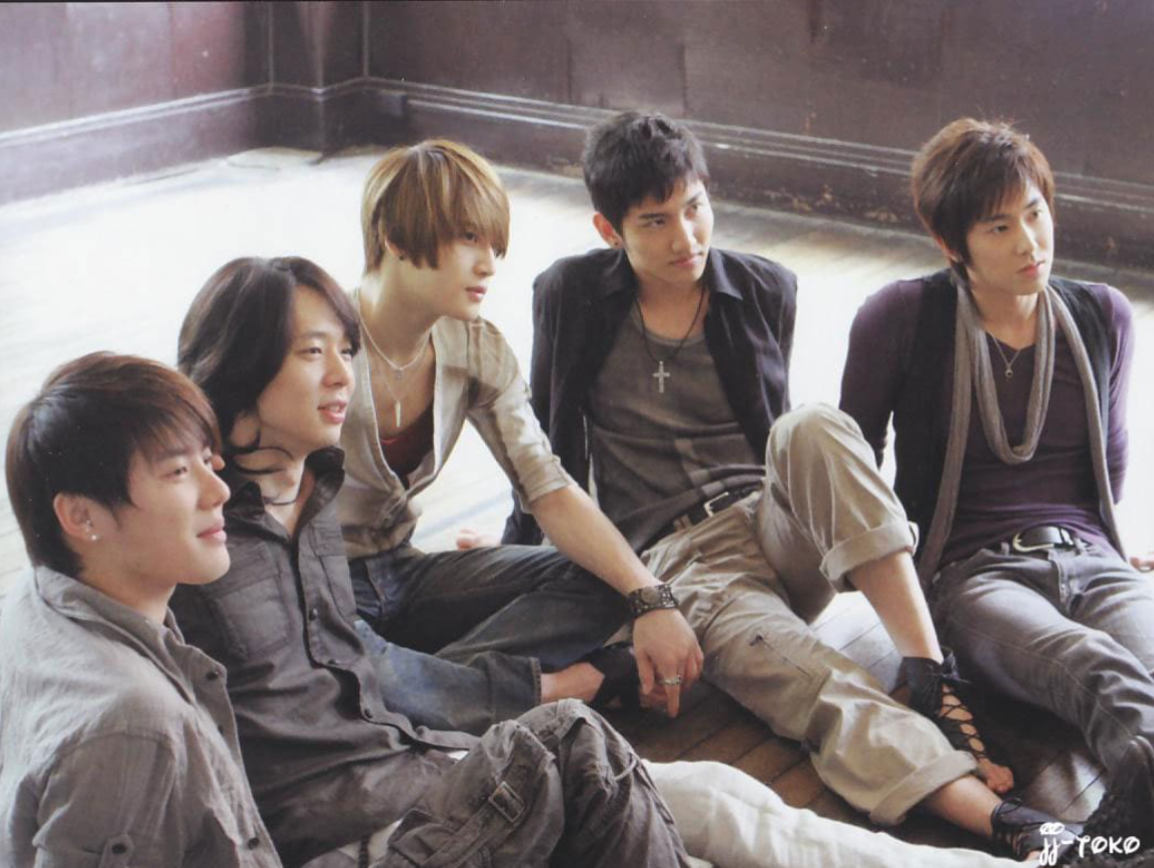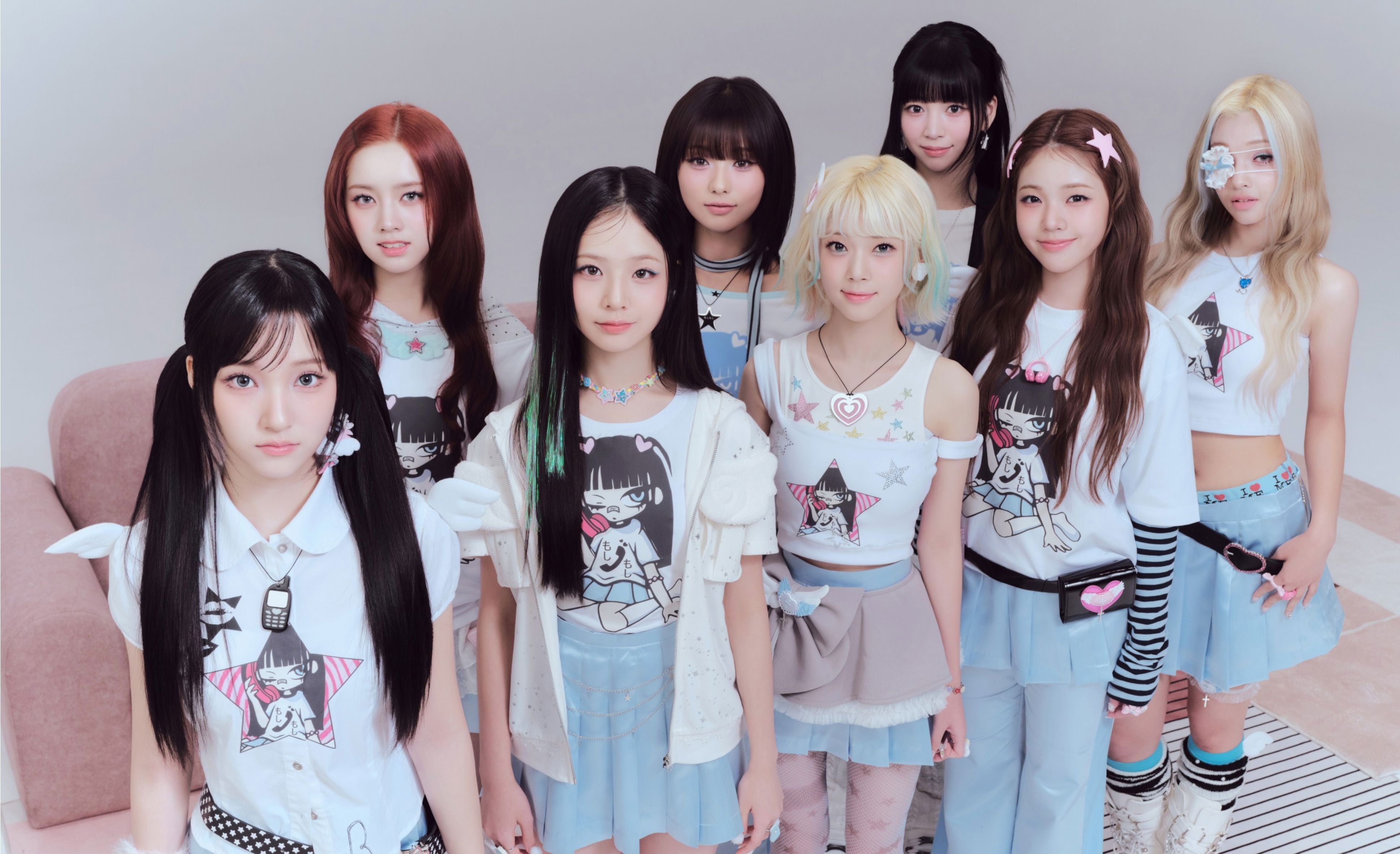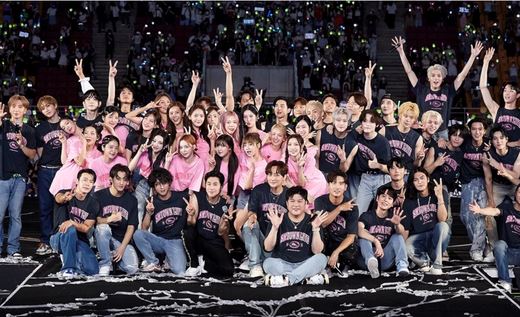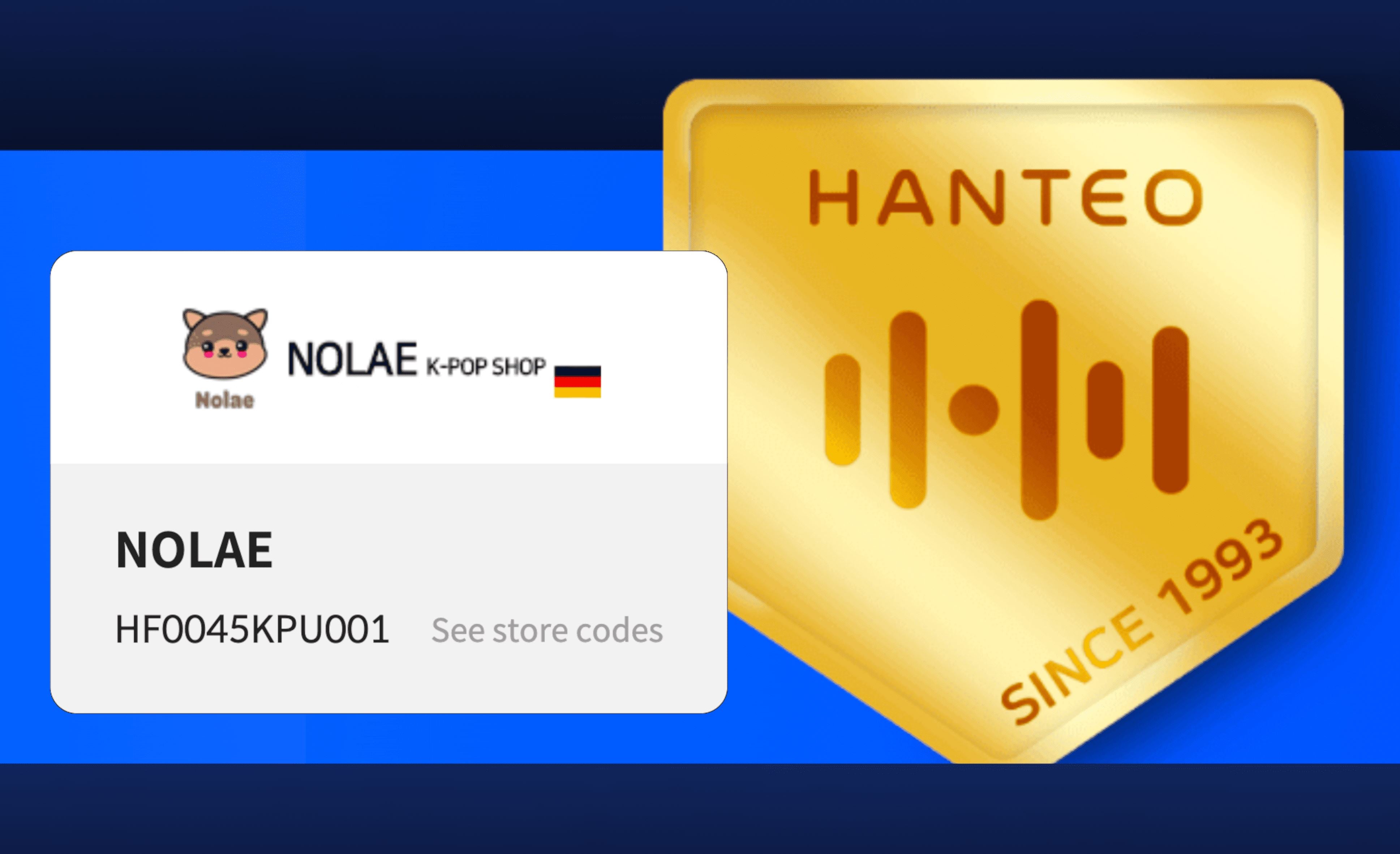All about the 2nd generation of K-Pop: 2003 - 2012!
Alles über die 2. Generation von K-Pop: 2003 - 2012!
Autor: Helen Bosch / Okt 28, 2022


K-Pop Blog > Overview > K-Pop Generationen
Die zweite Generation des K-Pop ist auch als “Golden Age of Kpop” (das Goldene Zeitalter des K-Pop) bekannt und hat viele heute fast schon legendäre Künstler wie SHINee, Girls’ Generation oder IU hervorgebracht. Lass uns diese Ära gemeinsam etwas genauer anschauen!
Wenn du mit dem Begriff “Generations” nicht so viel anfangen kannst, kannst du dir in unserem Artikel über die vier K-Pop Generationen erstmal einen kurzen Überblick verschaffen.
Diese Fragen beantworten wir heute:
- Wann begann und endete die 2. Generation?
- Was macht die 2. Generation aus?
- Welche Bands gehören zur 2. Generation?
Wann begann und endete die 2. Generation?
Die 2. Generation begann nach allgemeiner Ansicht in 2003 mit dem Debüt der fünfköpfigen Boygroup TVXQ von SM Entertainment.
Wann Generationen genau beginnen oder enden, ist eigentlich immer umstritten, aber der Beginn der 2. Generation wird vergleichsweise wenig diskutiert. Denn obwohl der ein oder andere eher 2004/ 2005 als Startpunkt sehen würde, sind sich im Allgemeinen alle einig, dass TVXQ zur 2. Generation gehört. Da die Boygroup im Dezember 2003 debütierte, können wir uns also ziemlich genau festlegen.
Auch was das Ende der Generation betrifft, gehen die Meinungen nicht allzu weit auseinander.
Die Mehrheit ist sich einig, dass die Boygroup EXO, die ebenfalls zu SM Entertainment gehört, eine der ersten Gruppen der 3. Generation war. EXO debütierte im April 2012. Bei Gruppen, die noch früher im Jahr entstanden, sind sich Fans uneinig, wer schon zur Dritten und wer noch zur zweiten Generation gehört. Das gleiche gilt auch für einige Gruppen aus 2011. Da sich jedoch alle bei EXO einig sind, liegt die anerkannte Grenze bei Anfang 2012.
Was macht die 2. Generation aus?
Während der zweiten Generation haben die Künstler dem K-Pop zur Blüte verholfen: Sie haben angefangen, mehr mit ihrer Musik, ihrem Stil und ihrem Konzept zu experimentieren und verbreiteten das Genre in ganz Asien und darüber hinaus. Außerdem starteten sie mit den ersten Fotokarten und Lightsticks eine neue Sammelkultur und veränderten das Konzerterlebnis für sich und ihre Fans.
Bei all diesen Entwicklungen, welche die Grundlage für zukünftige Generationen bildeten und so die koreanische Musikindustrie maßgeblich beeinflussten, ist es kein Wunder, dass Fans die zweite Generation als “Golden Age of K-Pop bezeichnen” und sich gerne an diese Zeit zurückerinnern.
Im Folgenden gucken wir uns die verschiedenen Aspekte etwas genauer an, damit du keins der interessanten Details verpasst:
Experimente mit Musik, Stil und Konzepten

Nachdem die 1. Generation die Grundlagen des K-Pop entwickelt hat - choreografierte & synchronisierte Tänze + aufeinander abgestimmte Outfits + eingängige Musik + Fokus auf gutes Aussehen - haben die Künstler der zweiten Generation zunehmend mit der Musik und ihren Konzepten experimentiert. So bauten Gruppen wie f(x) und SHINee zum Beispiel Elemente von Electro-Pop und Synth-Pop in ihre Songs ein. Die Experimente der Künstler führten dazu, dass K-Pop sich seit der 3. Generation aus verschiedensten Musikgenres wie Techno und Rock zusammensetzt, während die Musik vor allem in der ersten Generation und Teilen der zweiten noch sehr dem klassischen Pop ähnelte und von amerikanischen Einflüssen geprägt war.
Außerdem probierten die Boy- und Girlgroups vermehrt neue Konzepte aus. Mal Süß, mal sexy und mal eher verrückt. Während zum Beispiel A-Pink lange Jahre bei einem Konzept blieb (süß), wechselten andere Gruppen bei jedem Comeback zu einem neuen Konzept.
Jedes Comeback wurde außerdem von neuen, ikonischen Fashion Styles begleitet.

So startete zum Beispiel SHINee den sogenannten SHINee Trend: Plötzlich trugen alle bunte Skinny Jeans und High Tops!
In 2006 wurde die erste Sub-Unit gegründet! Heute ist es normal, dass zwei oder drei Mitglieder einer Band eine sogenannte Sub-Unit bilden und mehr oder weniger regelmäßig eigene Alben veröffentlichen. Ein paar Beispiele dafür wären Irene & Seulgi (Red Velvet), EXO - CBX, SVT BSS (Seventeen) oder 3RACHA (Stray Kids).
Die allererste Sub-Unit “Super Junior-K.R.Y” wurde in 2006 gegründet. Wie der Name schon sagt, ist es eine Sub-Unit von der damals 13-köpfigen Boygroup Super Junior. Sie besteht aus den drei Main Vocals Kihyun, Ryeowook und Yesung. Die Sub-Unit entstand vielleicht auch deshalb, weil Super Junior für diese Zeit ungewöhnlich viele Mitglieder hatte. Heute sind mehr als 10 Mitglieder in einer Gruppe nicht allzu ungewöhnlich, aber Super Junior war die erste K-Pop Gruppe dieser Größe.
Verbreitung in Asien und darüber hinaus!
Schon kurz vor dem Beginn der zweiten Generation feierte der K-Pop erste größere Erfolge außerhalb von Südkorea. Unter anderem toppte die Sängerin BoA als erster koreanischer Künstler überhaupt die japanischen Oricon Charts mit ihrem japanischen Debütalbum “Listen to My Heart”. In den nächsten Jahren folgten weitere große Meilensteine in ganz Asien: Zum Beispiel wurde der Sänger Rain durch sein Album “It’s Raining” in 2004 zu einem der größten Starts in Asien und die Boygroup TVXQ löste auf dem ganzen Kontinent einen Hype um K-Pop Boygroups aus!

TVXQ hat aber nicht nur Erfolge in Asien gefeiert, sondern in 2008 und 2009 außerdem zwei Weltrekorde aufgestellt! In 2008 wurde im Guinness Buch der Rekorde festgehalten, dass TVXQ den größten offiziellen (bezahlten) Fanklub der ganzen Welt hatte. Er hatte damals über 800.000 Mitglieder! In 2009 schaffte die Boygroup es noch einmal ins Guinness Buch der Rekorde. Die Boygroup und ihre einzelnen Mitglieder waren bis zu diesem Jahr nämlich über 500 Millionen Mal fotografiert worden, öfter als jede andere Berühmtheit der Welt!
Die Jungs waren aber nicht die einzigen in der zweiten Generation, die ihren Namen über die Grenze von Asien hinaus trugen: In 2006 bereiste zum Beispiel Rain im Rahmen seiner ersten Welttournee nicht nur verschiedenste asiatische Länder, sondern darüber hinaus auch Australien, die Vereinigten Staaten und Kanada. In 2009 platzierte die Girlgroup Wonder Girls sich als erste koreanische Gruppe in den US-amerikanischen “Billboard Hot 100” Charts und begleitete die Jonas Brothers als Opening Act auf ihrer Welttournee!
Auch wenn der K-Pop erst in der 3. Generation offiziell den internationalen Durchbruch schaffte, haben mehrere Künstler wie du siehst, schon vorher große internationale Erfolge erzielt!
Die Entstehung von Fotokarten und Lightsticks
Fotokarten sind der wohl beliebteste K-Pop Fanartikel, mit denen Fans ganze Ordner füllen können. Ein neues Album zu öffnen ist vor allem deshalb so spannend, weil wir nicht wissen, welche Fotokarte uns darin erwartet. Manche Fans holen sich sogar mehrfach das gleiche Album, um möglichst viele verschiedene Fotokarten zu bekommen und so ihre Sammlung zu vervollständigen! Aber das beliebte Extra war nicht von Anfang an ein Teil der K-Pop Szene.

Tatsächlich begann der Trend erst in 2007. Damals veröffentlichte die Boygroup TVXQ nämlich ihr japanisches Album “Summer Dream”, welches zum ersten Mal auch Fotokarten enthielt! Das erste koreanische Album mit Fotokarten erschien in 2010: “Oh!” von der Girlgroup Girls’ Generation. Beide Gruppen gehören zu SM Entertainment.
Aber obwohl das Label von da an den Alben ihrer Künstler öfter Fotokarten beilegte - zum Beispiel in SHINee’s Album “Lucifer” (2010) - dauerte es noch eine Weile, bis der Trend von dem Rest der K-Pop Szene aufgegriffen wurde. So kamen auch die früheren Alben von Gruppen der 3. Generation wie B.A.P noch ohne Fotokarte darin. Heute gibt es kaum ein Album ohne Fotokarten! Außerdem gibt es inzwischen noch viele weitere kleine Extras wie Sticker und Lesezeichen dazu. Neben dem Fotobuch sind diese Extras etwas, was K-Pop Alben heute auszeichnet und sie stark von Alben aus anderen Ländern unterscheidet.
Auch die beliebten Lightsticks, die zu jedem K-Pop Konzert dazu gehören, entstanden in der zweiten Generation. G-Dragon von der Boygroup Big Bang (YG Entertainment) gestaltete in 2006 den allerersten Lightstick, weil er etwas haben wollte mit dem Big Bang Fans, die “V.I.P” genannt werden, sich identifizieren können.
So konnte Big Bang sie auch bei Festivals, bei denen mehrere Künstler auftraten, direkt erkennen. Wie du vermutlich weißt, war das nur der Anfang! Heute veröffentlicht jeder K-Pop Künstler früher oder später seinen eigenen Lightstick. Sie machen die Konzerterfahrung zu etwas ganz Besonderem: Die Fans schwenken ihre Lightsticks durch die Luft, um ihre Stars anzufeuern und erzeugen gemeinsam ein Lichtermeer. Wir können uns ein K-Pop Konzert ohne Lightsticks nicht mehr vorstellen!
Welche Bands gehören zur 2. Generation?
Dies sind ein paar der bekanntesten Vertreter:
- TVXQ
- Super Junior
- Girls’ Generation
- SHINee
- Big Bang
- 2NE1
- 4Minute
- Wonder Girls
- 2PM
- Kara
- T-ara
- Sistar
- A-pink
Wie die erste Generation wurde auch diese noch sehr stark von den Big 3 - SM Entertainment, JYP Entertainment & YG Entertainment - dominiert. Viele der beliebtesten und erfolgreichsten Gruppen der Zeit wurden von diesen drei Labels produziert! Auch große Meilensteine und maßgebliche Entwicklungen haben vor allem Künstler dieser drei Labels erreicht.
Natürlich hat die 2. Generation noch viele weitere populäre Gruppen wie Beast (heute Higlight), C.N.BLUE, Infinite, B1a4, Girls Day oder f(x) hervorgebracht. Die aufgeführten Beispiele vermitteln aber einen guten Überblick über die Zeit!
Hast du schon während der zweiten Generation angefangen, K-Pop zu hören?
Das könnte Dich auch interessieren
5% RABATT BEI NEWSLETTER ANMELDUNG
Die neuesten Produkte, Aktionen und News. Direkt in dein Postfach.











